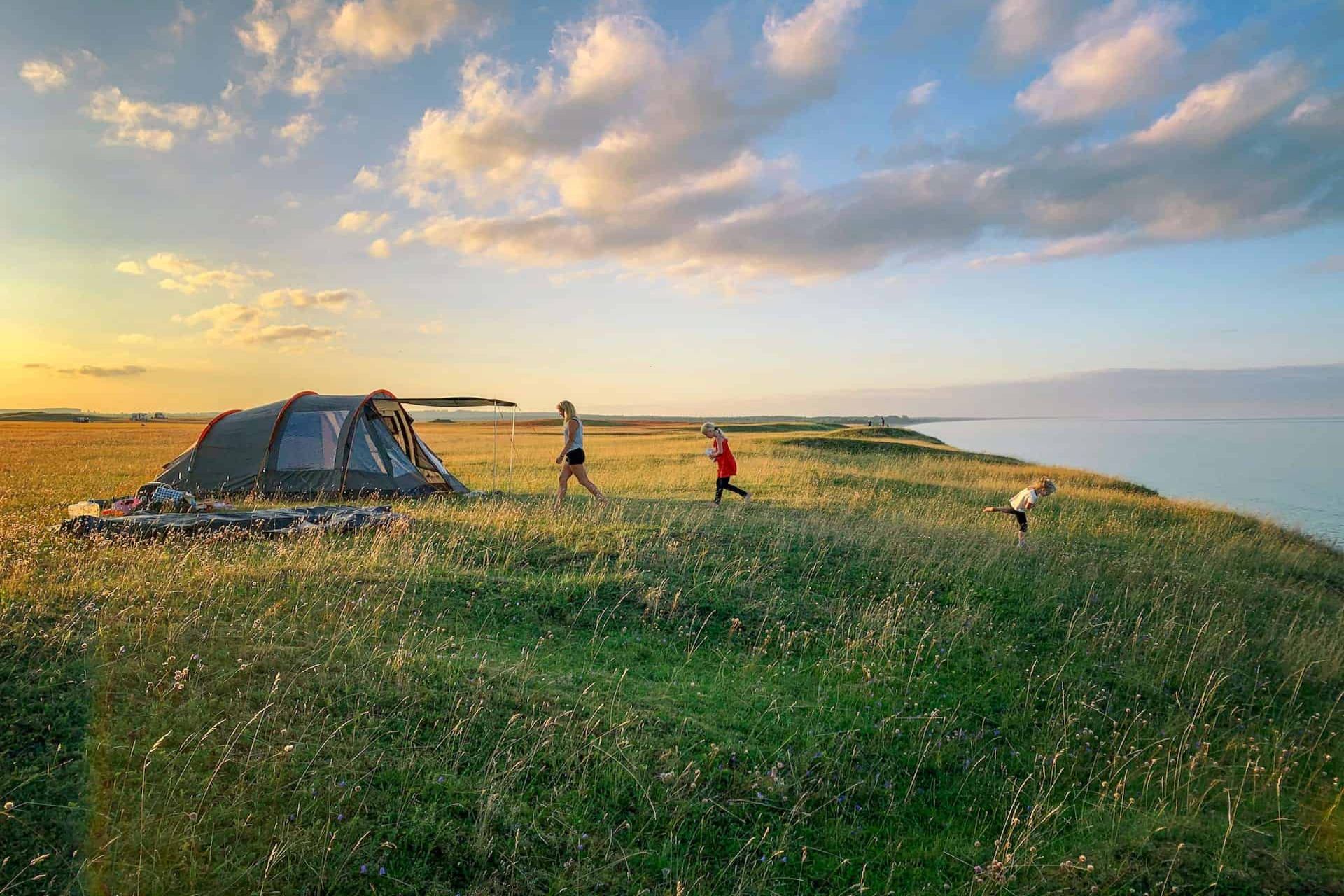When you think about camping, you probably picture a tent out in a national forest somewhere. But tent camping is actually only one type of camping – there are eleven more categories to choose from.
Camping is the perfect way to get away from the stress of life, get back to nature, and get a glimpse of some breathtaking scenery.
But which kind of camping should you be doing?
Whether you’re a newbie to camping or a seasoned professional, this guide will show you the different types of camping and how you can get started with each one.
What is Camping?
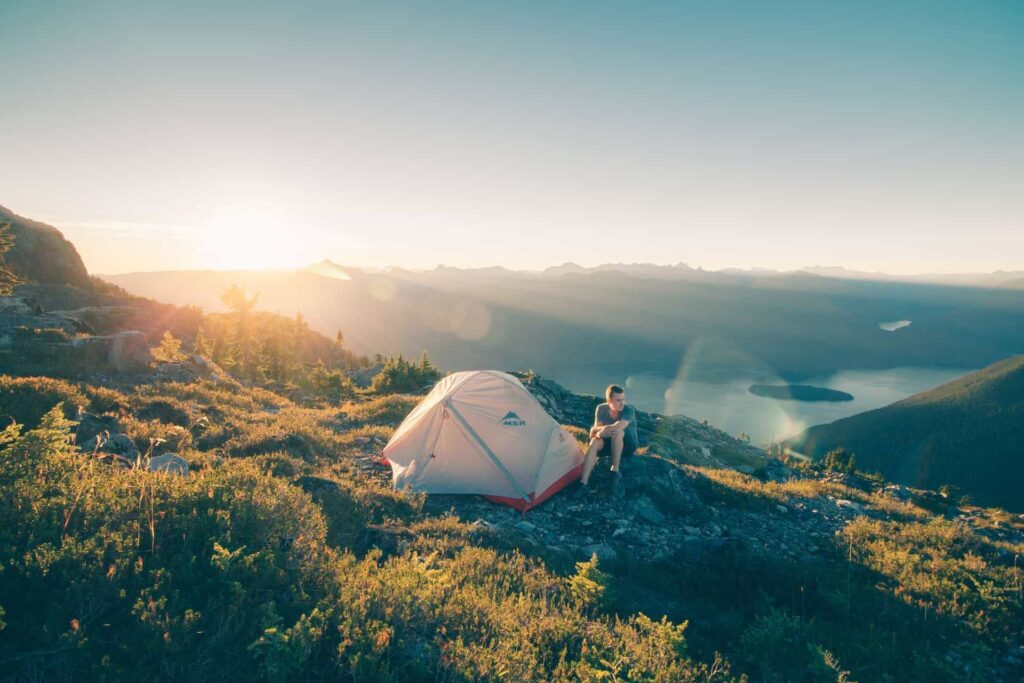
Before we dive into the different types of camping, let’s start with a definition of what we mean when we talk about camping in general.
Camping is an outdoor activity that involves spending the night in some kind of shelter out in nature. Although there are different types, the goal is to escape urban life and spend some time in a more natural environment.
Recreational camping has been around since the late 19th century, but we’ve evolved it a lot since then.
Why go Camping?
The next question is, why go camping? Why not just stay in an Airbnb or hotel near the wildlife you want to see?
Camping is cheap
You cannot beat the affordability of a camping experience when it comes to a vacation. There is the upfront investment of a tent and camping supplies, but once you have those, tent campsites are incredibly cheap, and you’ll spend most of your time doing free activities like hiking, playing games, and chilling on the beach.
Camping is easy
It doesn’t take a lot of practice to become a camper. In fact, all you need are some basic life skills and knowledge of erecting a tent, and you’re good to go.
Camping equipment is very affordable if you’re looking for the basic stuff, and learning how to use it effectively is easy with the thousands of YouTube videos out there.
Camping is fun
If you’re used to creature comforts, camping might come as a bit of a shock when you go for the first time. But it’s actually an enjoyable experience that helps you let go of everyday stress.
Campsites are relaxing, friendly places, and spending time out in nature is good for the soul.
Kids love camping
If you have kids, they’ll love camping. They have the ultimate freedom and one-on-one time with you, which is what all kids really want. Hotels and Airbnbs can be restrictive for kids, so allowing them the space to explore and run around is a great alternative. It’s also a fun experience you get to share.
Pets love camping
There aren’t many hotels that welcome pets, so our furry friends are usually left behind when we go on trips. But you can take your pets on a camping holiday, and they’ll love the new experience. Take your dog on hikes, splash in lakes, or run along a beach – they’ll love it just as much as you do.
What are the Types of Camping?
There are twelve different categories of camping, each suited to different skill levels and locations. If you’re thinking about taking a camping trip soon, this list should help you decide which type of camping is best for you.
Tent camping

Tent camping is probably the most well-known form of camping. Simply put, you sleep in a tent either on a campsite or out in the wilderness.
Tent camping doesn’t have to be complicated, and it’s suitable for even the newest of campers (we highly recommend a blackout tent if you don’t want to wake up at dawn). All you need is a decent tent and a few supplies:
- sleeping bag
- Water bottle
- Firestarter
- First aid kit
- Pocket knife
- Map and compass
- Weather-appropriate clothing
- Flashlight or headlamp
- Toilet paper
If you’re planning your first camping trip, try out a dedicated campsite first. These have toilet facilities, drinking water, and even showers, so they’re a good transition into roughing it in a tent.
Once you feel a little more confident about camping, you can try out wild camping in a state park.
Tarp Camping
Tarp camping is more minimalist. Rather than sleeping in a camping tent, you construct a shelter out of a tarpaulin to shield yourself and your gear from the elements.
Camping tarps are waterproof, durable, and UV proof, so they offer good protection from the elements.
We wouldn’t recommend tarp camping unless you’ve already tried tent camping. It’s tougher sleeping without solid protection and can be a little intimidating for beginners.
However, if you’re an avid camper and want to try out tarp camping, the key is investing in a quality tarpaulin. Make sure you research different ways of suspending and erecting a shelter and grab yourself an all-season sleeping bag to stay warm (especially for winter camping).
Bivy Sack Camping
If you’re planning on backcountry camping and want to limit the supplies you’re taking with you, bivy sack camping is ideal.
A bivvy bag is a large waterproof cover that goes over your sleeping bag. You won’t need a camping tent if you have a bivy sack, but it does mean you’ll be sleeping out in the elements.
This one is only recommended for experienced campers who have a good understanding of the wilderness, how to keep warm, and how to pack supplies.
Overall, bivy sacks are lighter, cheaper, and easier to set up than tents, but they don’t offer any privacy, and you’ll have almost no cover for your gear.
RV Camping
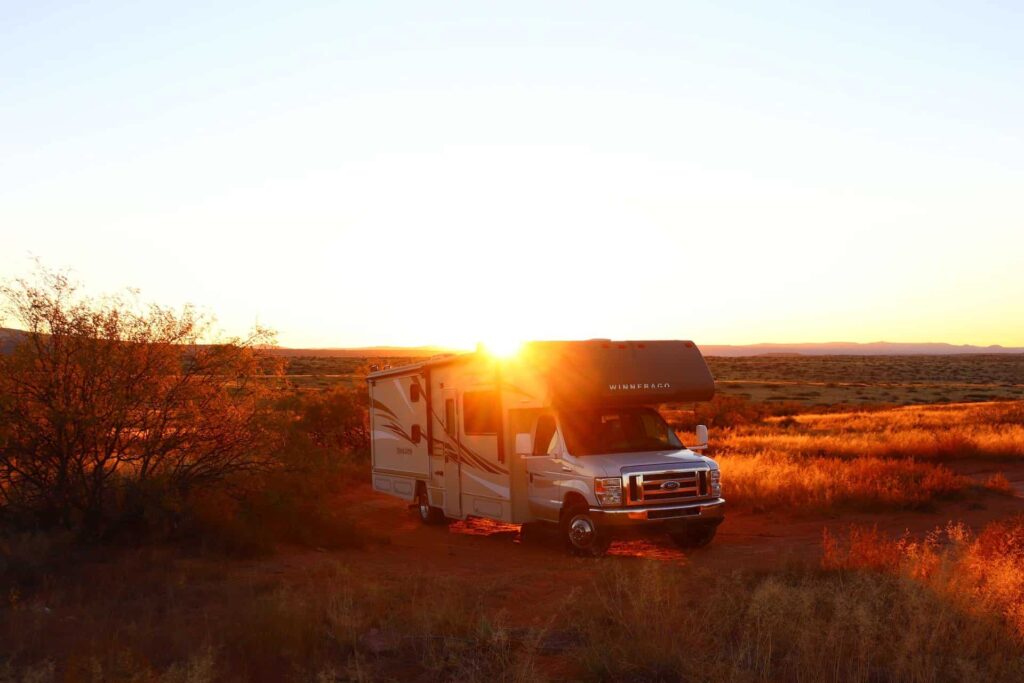
As the name suggests, this type of camping involves hitting the road in an RV. This type of camping is extremely popular at the moment, and RV rentals are skyrocketing.
For families looking for an affordable holiday, an RV rental can save between 27 and 62% of vacation costs, so it’s the perfect option for anyone on a budget.
The great thing about RV camping is that you don’t lose any of your home comforts. They have toilets, full kitchens, beds, and full protection from the elements.
Many campgrounds have facilities for RVs, and there are plenty of RV resorts. If you’re looking for a fun camping holiday for your family, renting an RV is a great option.
Overlanding
Overlanding is a self-reliant form of camping where the journey is the goal rather than the final camp spot. It involves long-distance travel to remote locations that are usually hard to reach.
Most people accomplish overlanding with off-road-capable transport (e.g., trucks, bikes, etc.), but many also overland on their feet with extended hiking trips.
Overlanding involves pushing yourself to the limit and taking on a variety of elements, from huge boulders and mountains to waterfalls and deep waters.
Overlanding is only for those with survival training and/or experience, and it’s a commitment that can take weeks or months to complete. But the pay-off is seeing places that are almost entirely unexplored, which is a reward in itself.
Backpacking
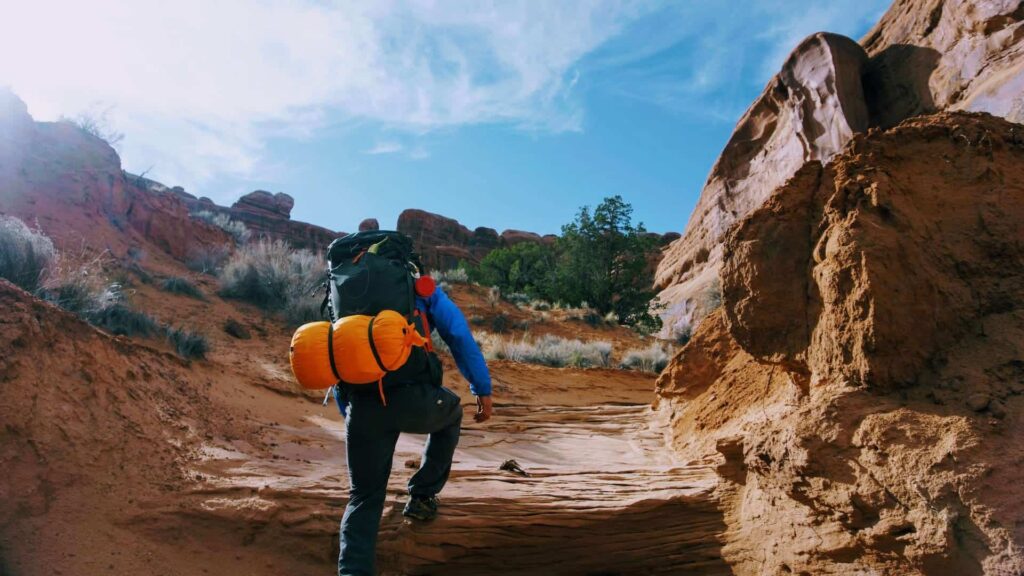
Backpacking involves traveling with only the supplies you can carry on your back. But that’s not as limiting as you might think.
Modern backpacks for hiking can fit clothes, food, first aid kits, camping gear, and a backpacking tent – everything you need for a short trip.
This one is great for travelers looking to explore remote locations overnight without access to a vehicle. For example, if you’re exploring Great Sand Dunes National Park, where vehicles are limited.
The key to backpacking is planning and preparation. You should have a clear route mapped out, locations for overnight camping, enough supplies for emergencies, and plans should something go wrong.
If you want to start backpacking, choose a short, overnight route first. This will give you a feel for carrying your equipment and gauge how far you are capable of going in a day. Stay close to home and make sure someone knows your route and checkpoints so they can check up on you.
Car camping
There’s a misconception that car camping means sleeping in your car. But that’s not quite the case. Car camping involves loading up all your gear into a car and then setting up a tent near it at a campsite or in an appropriate area.
Cars aren’t actually great for sleeping in overnight. They become humid and trap moisture inside, not to mention they can be incredibly noisy in the rain and wind.
However, setting up a camping tent near your car means you can take many more supplies with you and don’t have to worry about carrying them all. Not to mention that you’ve got your car handy to go on trips during the day.
Anyone can try out car camping, and it’s one of the easiest to do. Simply load up your car with supplies (including everything you would take tent camping), and head to a campsite.
Glamping
Glamping used to be reserved for the elite who wanted to attend music festivals without slumming it in a normal tent.
Now, it’s a growing trend that is far more accessible. Glamping (glamorous camping) involves enjoying nature while staying in a luxury form of accommodation. This could be a glamping pod, treehouse, cabin, converted caravan – the list goes on.
If you’re someone who loves nature, hiking and being outdoors but you’re not a fan of sleeping in a tent, glamping is a great choice for you.
You’ll find tons of glamping accommodations on sites like Airbnb in pretty much every state. Most have a full-size bed, bathroom, and WiFi, so you don’t have to say goodbye to the comforts of home.
Survival Camping
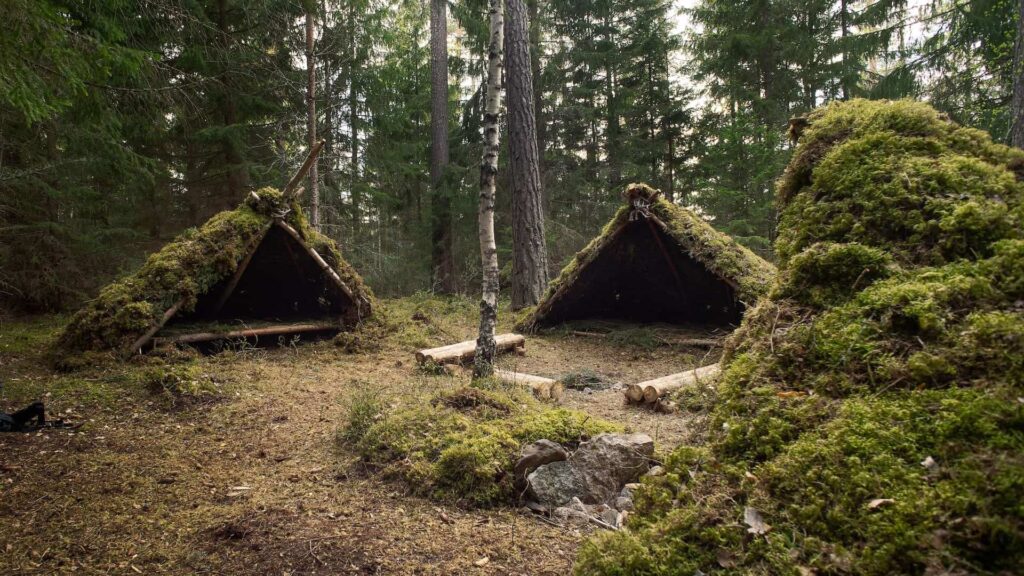
If you’ve ever watched Bear Grylls surviving out in the wilderness with almost no equipment, you’ve witnessed survival camping.
Survival camping (also known as minimalist camping) is all about testing your survival skills by spending time in the wilderness with only the bare necessities.
You have to build your own shelter, find your own food, and look after yourself in all types of weather. It’s a true test of a person’s survival skills and shouldn’t be taken lightly.
There are no set rules regarding the equipment you can and can’t take survivalist camping. Instead, it’s up to you to figure out what you will and won’t need. Some people take a tent and nothing else, others prefer no tent but will take some food and water.
If you’re planning on trying survival or adventure camping, make sure you choose a place that’s remote but reachable in an emergency and let someone know your plans. A first aid kit is also a good essential to take with you – even a small cut in the wilderness can lead to severe issues.
Ultralight Camping
Ultralight camping involves reducing the weight of your pack as much as possible. However, this doesn’t mean you can’t take essentials, it just means you have to find lightweight versions.
There isn’t a set limit on the weight of your pack in order to be classed as ultralight camping, but most campers aim for between 12 and 28 pounds.
To get started, weigh your gear to figure out how much you need to reduce it. You might find that you have an extremely bulky tent, and a lightweight, smaller one would reduce the overall weight significantly.
But don’t feel like you need to throw away all of your gear and buy new. Make gradual changes over time. Ultra-lightweight gear isn’t always as durable, so do your research and don’t sacrifice quality.
Kayak/Canoe Camping
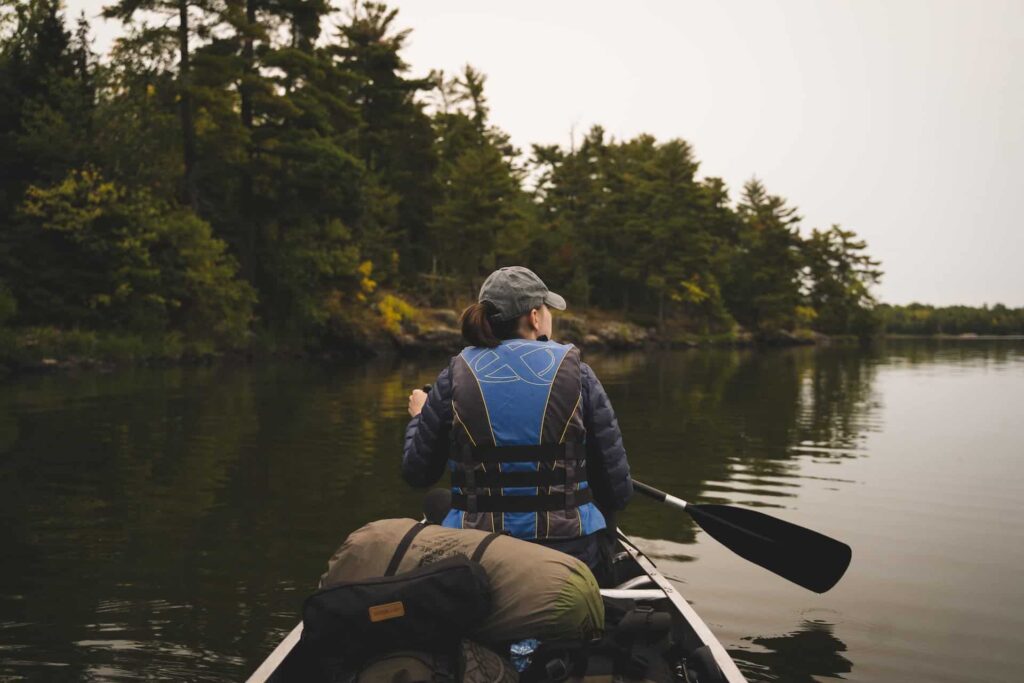
Kayak or canoe camping is a unique adventure that every camper should try. Spend your days out on the water and then enjoy a night under the stars.
People who go kayak camping regularly have their own kayaks, but you can rent one out in the beginning to figure out if it’s for you.
Many of the national parks have stunning lakes that are perfect for kayaking and canoeing. Research a campsite near the water or the coast, and you’re good to go. All you need to do is load up a tent, your supplies, and a kayak, and you’re ready for your adventure.
Canoe camping can be a little more tricky because canoes are so much bigger, so you won’t have as much space for gear. However, you could find a campground that’s near a canoe rental spot to avoid having to transport one.
The main thing to consider when thinking about kayak camping is your skill level. If you’re totally new to kayaking, opt for a lake. The ocean is choppy and can be much more difficult to kayak on. Similarly, many popular rivers for kayaking have rapids that are more suitable for advanced kayakers.
You’ll also want to camp for at least one or two nights. Kayaking and canoeing are incredibly tiring, and you’ll want plenty of time to rest between outings.
Bicycle Touring Camping
Bicycle camping is a catch-all term used when your primary means of transport is a bike of some kind. Generally, bicycle camping is split into cycle touring and backpacking.
Bicycle touring involves heading to a place with dedicated bike routes. You’ll need to plan the entire route, including where you’ll stop to camp at night. Bike touring is a great way to cover a lot of ground, but it’s hard to carry supplies on your bike, so you need to be strategic about your pack.
You could plan checkpoints along your route where you pick up supplies to save carrying things like gallons of water and food. It all comes back to planning.
Backpacking with a bike involves having a base where you camp and explore the local area on a bike. You might spend time hiking, swimming, and doing other activities, but most of your trip is centered around bike rides.
In many cities, you’ll find organized bike tours that take care of the route planning for you. This can be a great way to explore a new place and incorporate camping into your trip.
Which Type of Camping Will You Choose?
As you can see, there’s a lot of variation when it comes to camping style. What you choose will come down to your personal preferences, skill level, and budget.
If you’re brand-new to camping and on a tight budget, tent camping will probably be the best. If you are a seasoned camper looking for a real challenge, maybe you’ll try survival camping.
Whichever one you choose, make sure you have the right equipment for the trip. In our next guide, we’ll look at the different types of camping tents and show you which one you need for your camping adventure.

